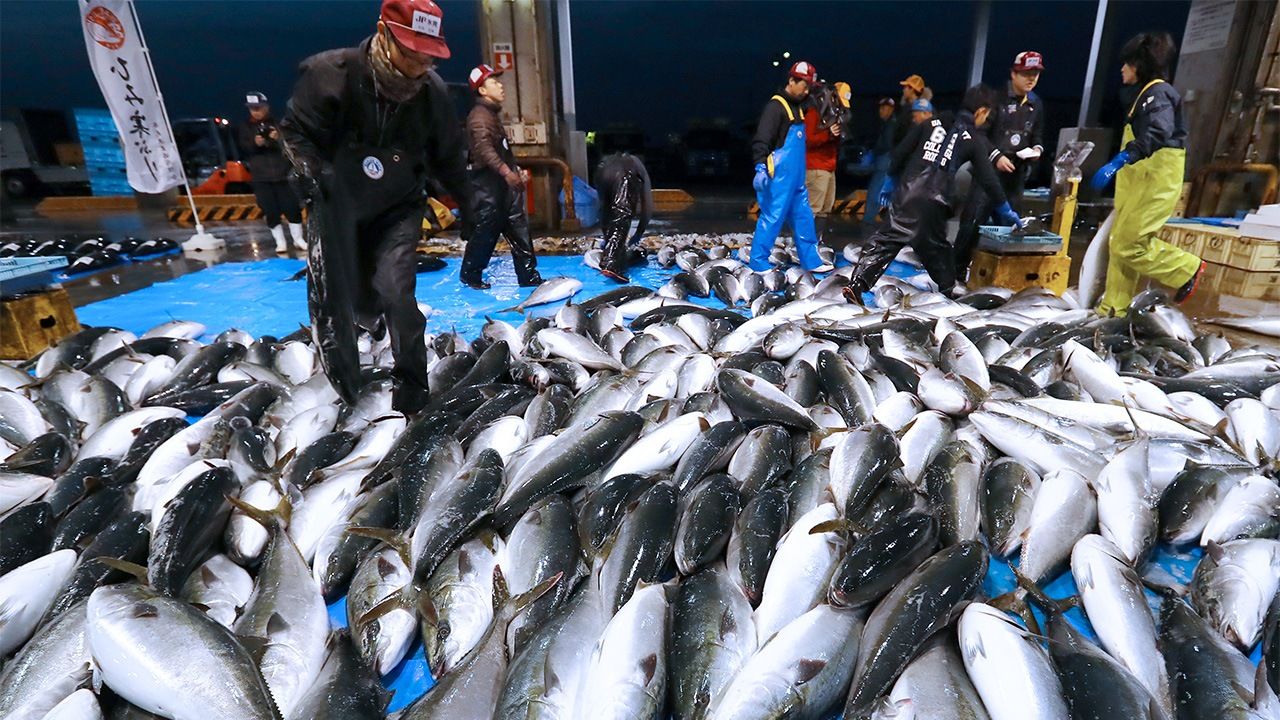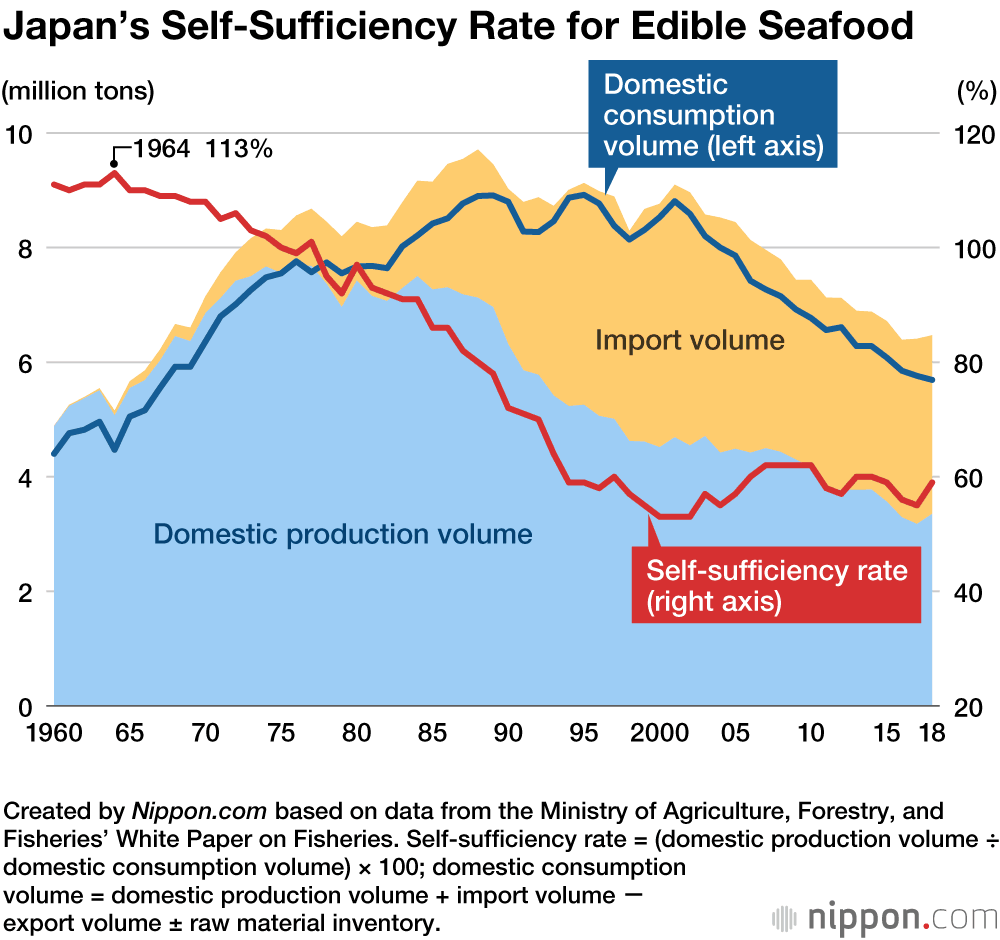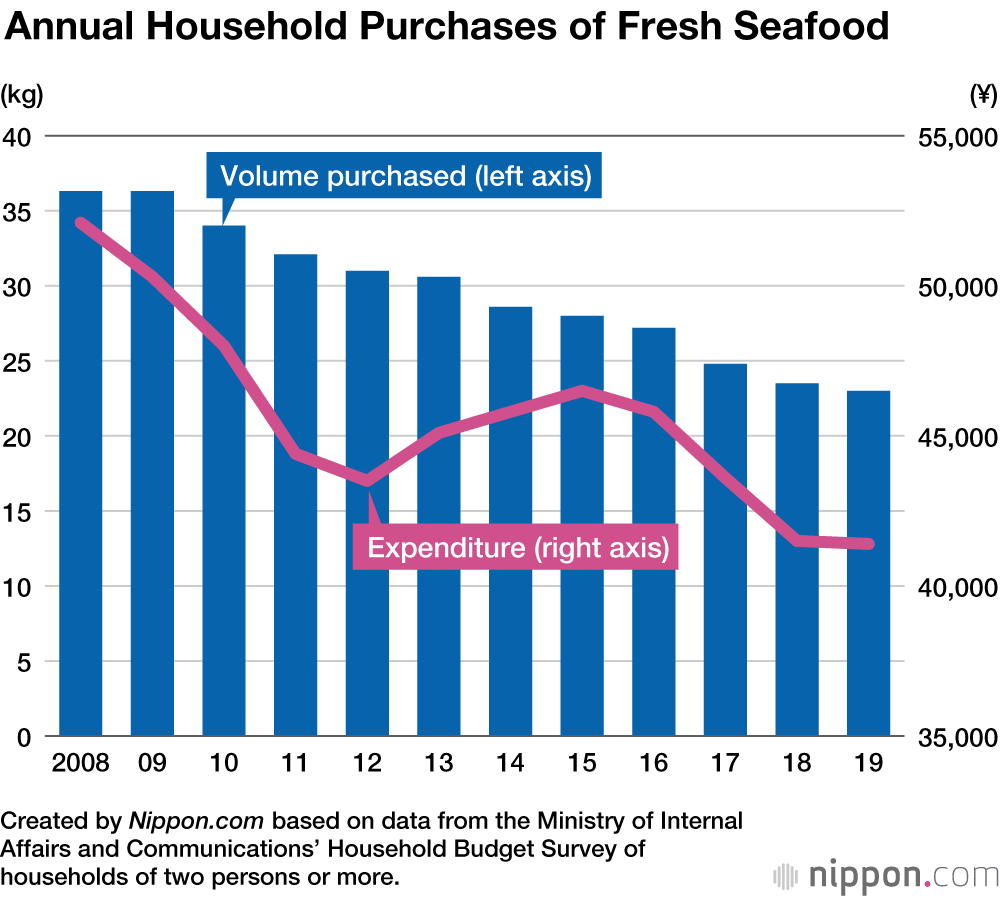
Fish No Longer the Main Dish in Japan?
Food and Drink Lifestyle Culture Economy- English
- 日本語
- 简体字
- 繁體字
- Français
- Español
- العربية
- Русский
In 2018, Japan’s self-sufficiency rate for edible seafood rose by 3 points from the previous year to 59%. The rate peaked at 113% in 1964, when almost all seafood was domestically sourced. Since then, it has gradually fallen and in recent years has remained around 60%.
The fish sections at Japanese supermarkets include mackerel from Norway, salmon from Russia and Chile, octopus from Mauritania, and shrimp from Indonesia. Seafood essential to Japanese cuisine is now being imported from around the world.
The annual volume of fresh seafood purchased per household is also steadily declining. According to a Ministry of Internal Affairs and Communications survey of households of two persons or more, in 2008 households purchased 36.3 kilograms of fresh seafood on average; however, by 2019 this had fallen to 23 kilograms.
Meanwhile, the Ministry of Agriculture, Forestry, and Fisheries’ Food Balance Sheet shows that in 2001 the annual per capita consumption of edible seafood peaked at 40.2 kilograms, while in 2018 this was down to 23.9 kilograms. Individual consumption of protein is not falling though and while the consumption of seafood is decreasing, meat consumption is now supplementing people’s protein intake. The strong image people have of Japan as a nation of fish eaters is gradually fading.
(Translated from Japanese. Banner photo: © Jiji.)

